Rainwater Harvesting
Small in-field soil depressions or rainwater basins (about 0.6m x 0.6m x 0.3m deep) can reduce run-off from coffee plots and thereby give time for the water to infiltrate into the soil so that it can be used by the plant.
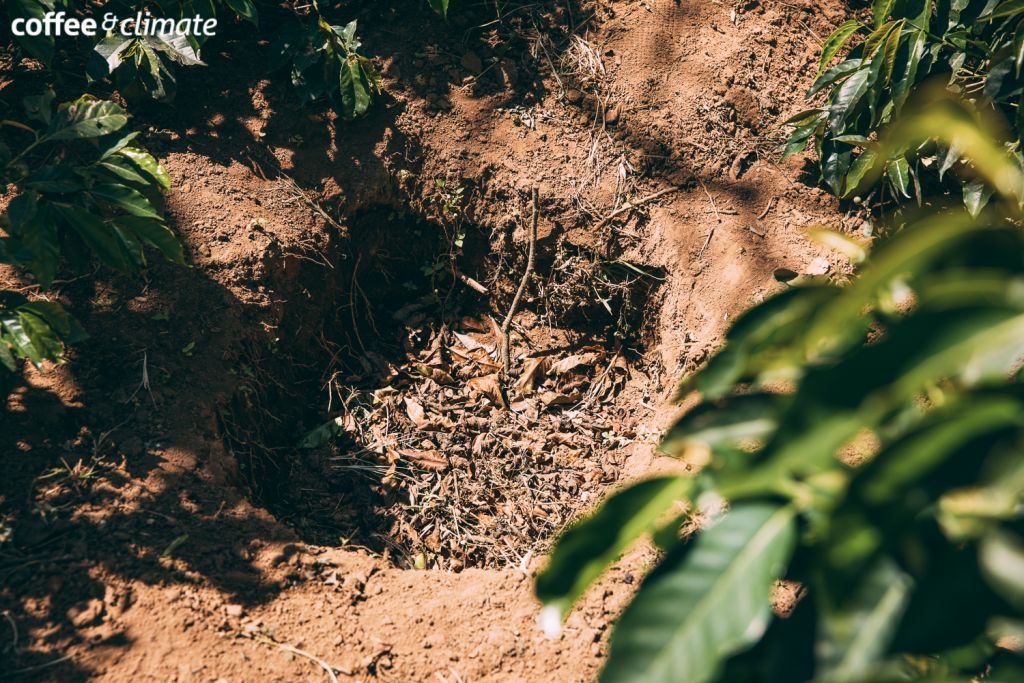
Concept
There are many ways to control rainwater in order to reduce run-off and encourage infiltration. The simplest is to create depressions or undulations within the field itself so that the water is held temporarily (from minutes to hours) to give the water time to infiltrate into the soil where it helps to recharge moisture in the lower horizons of the soil which can subsequently be taken up by the plants. Mostly these basins have been constructed around the coffee stem itself, so that the tree grows in a basin. The disadvantage of this is that the basins tend to fill up with transported soil after rain and have to be re-excavated, which causes damage to feeder roots. In the present case, the micro-basins are made between the coffee rows to minimize the damage to coffee roots.
Drawbacks
- If there is an intense rainfall, the basins can overflow.
- If plots are devoid of plant cover or mulch, rain-induced soil movement within the field can quickly fill the basins which then need re-excavating.
- Digging the basins is labour-intensive.
- Surface of the plot becomes more uneven, hence routine agronomic activities can become more time-consuming.
Costs
- High labour costs to construct.
Recommended Activities
- With farmers, carry out small scale trials with parts of plots to compare to previous practice.
- Excavate depressions between the coffee rows, at least 0.5 x 0.5 x 0.3 m deep with a hoe.
- Wherever possible, line the depressions with a groundcover plant to reduce soil erosion and in-filling.
Further Activities
- Most applicable when rainfall is very limited and soils have poor infiltration.
- Should be considered as an emergency/short term measure. Regular use of hoes and spades in coffee fields should be discouraged to reduce disturbance to the soil, so every effort should be made to make earthmoving an infrequent task.
- More permanent contoured banks and swales (continuous shallow ditch depressions) which are lined with a cover crop and fringed with strips of Vetiver or Brachiaria grasses should be considered, built in such a way that rainwater flows slowly along the swales and eventually towards permanent ponds to capture excess run-off.
- Have something to add to this tool description? Leave a comment!
- Interested in applying this tool? Look for pictures, case studies and info sheets below for step-by-step instructions to get you started.
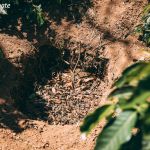
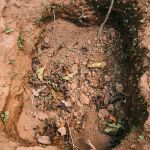
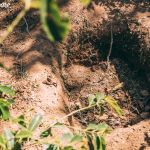
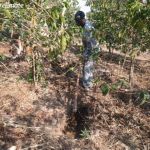
Interesting. Well written.